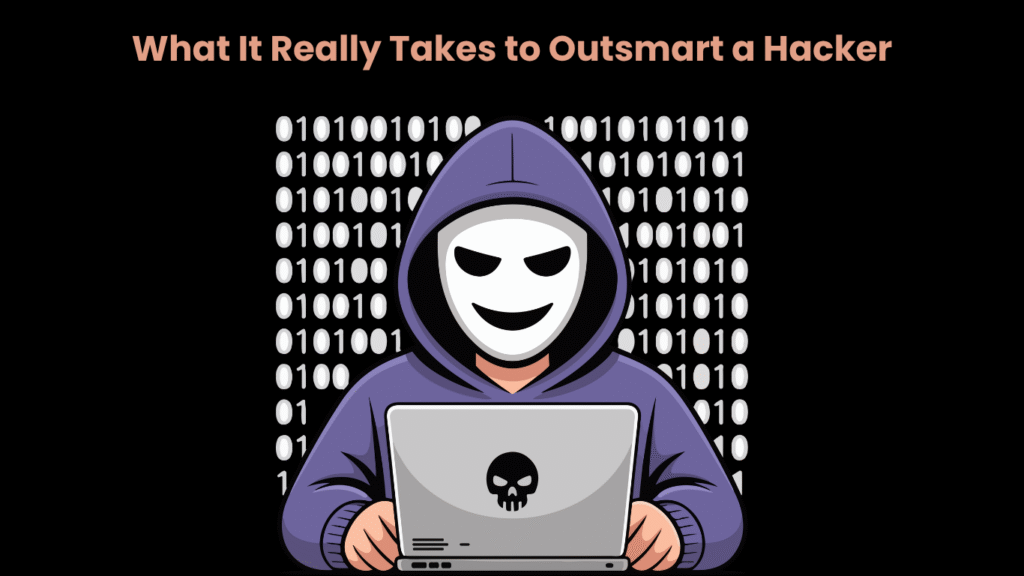In recent years, Kentucky has seen more businesses and public offices fall victim to cyberattacks. Cyber threats have become a daily reality for everyone. A single click on a fake email or a missed software update can expose sensitive data. What’s worse, hackers don’t need to be near you to strike. They use global networks, leaked credentials, and social tricks to get what they want. That’s why it’s more important than ever for individuals and businesses to understand how hackers operate.
This article breaks down what that really means, offering practical insight into how to protect your systems, data, and digital identity in a world where online threats never rest.
1. Understanding How Hackers Think
Hackers exploit gaps in systems and human behavior. They look for the easiest way in, not necessarily the most technical one. For example, many attacks start with a fake email that tricks someone into sharing a password. Others rely on weak network settings or outdated software.
To outsmart a hacker, you have to understand their logic. They often scan for predictable habits—reused passwords, unsecured Wi-Fi, or ignored security warnings. Learning how they think helps you notice patterns that others miss. It’s not about paranoia; it’s about awareness. When you know how an attacker operates, you can block their path before they strike.
2. Staying Ahead Through Constant Learning
Technology changes fast, and so do cyber threats. A method that worked last year might fail today. That’s why staying informed is one of the strongest defenses you can build. Cybersecurity isn’t just for IT professionals anymore—it’s a skill set everyone needs.
Many professionals build their expertise through ongoing education, such as Northern Kentucky University’s online Master of Science in Cybersecurity. The program stands out for its flexible 100% online format and hands-on approach to real-world problem-solving. NKU’s location near the Cincinnati tech corridor gives students access to regional employers and a growing network of cybersecurity professionals. The university is also recognized by the National Security Agency as a National Center of Academic Excellence in Cyber Defense, which adds credibility and industry value to its degree.
Continuous learning helps people understand new attack techniques and develop strategies that match today’s complex systems. Even reading credible tech news, joining webinars, or participating in community security forums can make a big difference. The goal is to stay updated and ready, not reactive.
3. Spotting Social Engineering Tricks Before It’s Too Late
Many hackers rely on manipulation, not malware. Social engineering is when an attacker pretends to be someone trustworthy—a coworker, a vendor, or even a friend—to make you act without thinking. It’s one of the most effective tactics because it targets human trust.
Phishing emails are the most common form. They often look legitimate but include small red flags: strange sender addresses, spelling errors, or urgent requests. Hackers may also use phone calls or fake login pages. To stop them, slow down before reacting. Verify who’s contacting you through official channels. Awareness and skepticism are your best tools.
4. Protecting Data Before Someone Steals It
Hackers don’t always care about the person—they care about the data. Personal details, client records, and financial information are all valuable on the dark web. That’s why protecting data should be a daily habit, not an occasional task.
Start with encryption. It keeps information unreadable even if stolen. Back up your files regularly so you can recover them if ransomware hits. Use secure cloud storage or external drives that aren’t always connected to your network. For small businesses, access control is essential—only allow staff to see the data they need.
In Kentucky, many small organizations have faced data loss because they underestimated these steps. Hackers often choose easy targets, and lack of preparation makes their job simpler. Protecting your data isn’t expensive or complicated. It just takes consistency, care, and awareness.
5. Acting Fast When a Breach Happens
Even with strong defenses, no system is completely safe. What matters most is how quickly you respond. A fast and organized reaction can limit damage and prevent the same issue from happening again.
If you suspect a breach, disconnect the affected devices from the network right away. This helps stop the spread of malware or data theft. Change all passwords and alert your team so everyone knows what’s happening. Keep records of what you see, such as error messages or unknown files. These details help experts trace the attack.
Every business, even small ones, should have a simple incident response plan. It should list who to contact, what systems to check, and how to communicate with staff or clients if data is affected. Reporting serious attacks to law enforcement or cybersecurity authorities can also help track larger threats.
Being calm and ready is what separates a quick recovery from a crisis that drags on for weeks.
Read More: Enhancing Data Security: The Impact of AI on Cyber Defense Mechanisms
6. Learning from Ethical Hackers
Not all hackers are criminals. Ethical hackers, often called white-hat hackers, use their skills to help companies find weaknesses before the bad actors do. They test systems, run penetration tests, and report flaws responsibly.
Working with ethical hackers gives organizations valuable insight. These experts use the same methods as cybercriminals but aim to improve security instead of exploiting it. Many businesses run “bug bounty” programs that pay people to find and report vulnerabilities. This proactive approach saves money and strengthens trust.
By understanding how hackers think, building strong habits, and responding quickly when something seems wrong, anyone can lower their risk. Businesses that promote a culture of security and keep learning will always have the advantage.




